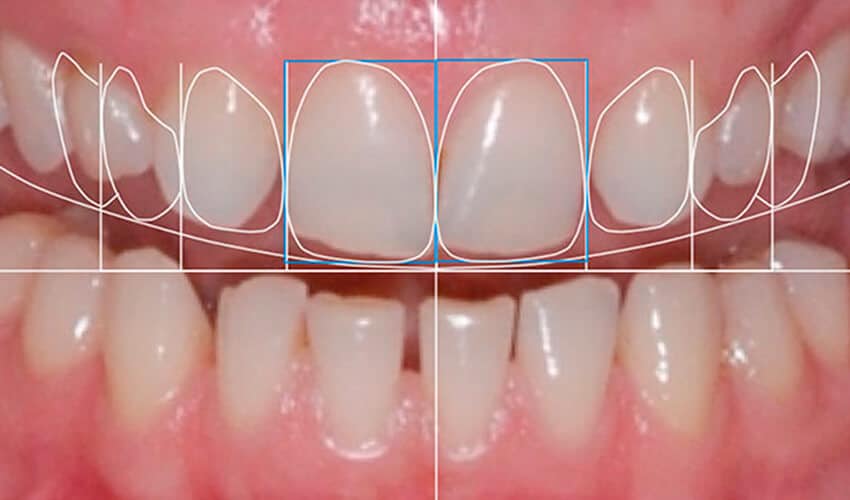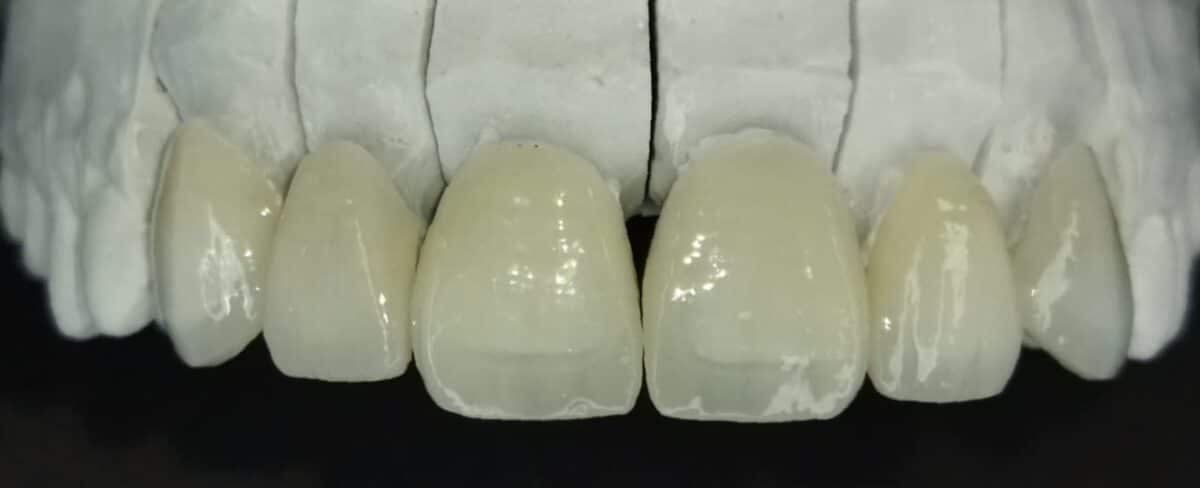Do you long to have the perfect smile? Now it is possible thanks to dental veneers. These thin porcelain sheets are an effective aesthetic solution to correct a wide range of dental problems and achieve an improved dental appearance.
Dental veneers are used by many celebrities and people with high public profiles due to their ability to quickly transform a smile.
Veneers can help you if you want to correct discolored teeth, chipped or cracked teeth, spaces between teeth, or even slightly crooked teeth.
This article will give you all the information you need to know about dental veneers, from how they are placed to aftercare. You will discover the different types of dental veneers available and how to choose the most suitable ones for you. Get a beautiful and natural smile with dental veneers.
Don’t let dental imperfections prevent you from showing off the smile of your dreams. Read on to discover how dental veneers can transform your dental appearance and give you the confidence you deserve.

Table of Content
What are Dental Veneers?
They are thin sheets of porcelain that are bonded to the front of the teeth to improve their appearance.
These veneers are the main treatment of a smile design, they seek to imitate the natural appearance of teeth and can correct a variety of dental aesthetic problems, such as stains, chips, fractures, spaces and slightly crooked teeth. Dental veneers are a popular option for those who want a quick and effective solution to transform their smile.
There are different types of dental veneers, including porcelain and composite. Porcelain veneers are known for their durability and stain resistance, while composite veneers are more affordable and can be placed in a single visit to the dentist. Both types of veneers have unique benefits and considerations, so it’s important to talk to your dentist to determine which is the best option for you.
Dental veneers are a long-term solution to improving dental appearance, and with proper care, they can last for many years.
The process of placing dental veneers involves several stages, from the initial evaluation to preparing the teeth and placing the veneers.
Be sure to follow your dentist’s recommendations for care to keep your smile radiant.

Benefits of Dental Veneers
Veneers offer a number of benefits for those who want to improve their dental appearance. These are some of the main benefits you can expect when opting for dental veneers:
- More beautiful-looking teeth: They can correct a wide range of aesthetic problems, achieving a more attractive smile and renewed confidence.
- Quick results: they offer results in one or very few appointments. After the placement of veneers, you will notice a significant improvement in the appearance of your teeth, allowing you to enjoy a transformed smile immediately.
- Durability: They are made of durable materials, such as porcelain, that can withstand daily wear and tear. With proper care, dental veneers can last for many years, giving you a long-term radiant smile.
- Conservation of tooth structure: require minimal removal of natural tooth structure. This means that most of your original teeth are preserved, which is beneficial for long-term dental health.
- Versatility: They can correct a wide range of cosmetic dental problems, making them a versatile solution for those who want to improve their dental appearance. Whether you need to correct stains, chips, fractures, gaps, or slightly crooked teeth, dental veneers can be tailored to your specific needs.
Types of Dental Veneers
There are two main types: porcelain and composite. Each type has its own unique characteristics and considerations. More information about each type is detailed below:
- Porcelain veneers: Porcelain (feldspathic ceramic) or zirconium are the most popular materials used due to their durability and resistance to stains as well as a much more natural appearance. These veneers are made in a dental laboratory (AKA Indirect technique) and bonded to the teeth using a special dental adhesive.
- Resin or Composite Veneers: Composite dental veneers are made of a composite resin material that is bonded to the teeth using a dental adhesive. Unlike porcelain veneers, composite veneers can be placed in a single visit to the dentist (AKA Direct techique), making them more convenient for those who want quick results. However, composite veneers are not as durable as porcelain veneers and may require periodic repairs or replacement.
It’s important to talk to your dentist to determine what type of dental veneers is best for you, considering factors such as your aesthetic goals, budget, and overall dental health.
The Placement Process
The process of placing dental veneers typically involves several stages, including initial evaluation, tooth preparation, and placement of the veneers. Each stage of the process is detailed below:
- Initial evaluation: At this stage, your dentist will evaluate the condition of your teeth and discuss your aesthetic goals. X-rays will also be taken and impressions made of your teeth to assist in the manufacturing of the dental veneers.
- Mockup: based on the impression of your teeth, a model is made where the appearance of your teeth is proposed once you have the veneers. With this model, temporary veneers are made, known as mockups. The idea is that, for a few days, you can have a very close idea of what your veneers will be and you can give observations that make them more satisfactory for you.
- Tooth preparation: Before placement, it may be necessary to prepare your teeth. This may involve chipping or chipping away a small amount of tooth enamel to create space for the veneers. Your dentist will provide you with local anesthesia to ensure your comfort during this process.
- Taking Impressions: After preparing your teeth, impressions will be taken of your teeth to send to the dental laboratory. These impressions will be used to make custom dental veneers that will fit your teeth perfectly.
- Placement: Once the they are ready, your dentist will place them on your teeth using a special dental adhesive. Be sure to discuss the color and shape of your veneers with your dentist prior to placement to ensure optimal aesthetic results.
After placement, you may experience temporary tooth sensitivity. This is normal and usually goes away within a few days. Be sure to follow your dentist’s care recommendations to keep them in optimal condition.

How long do they last?
LThe duration varies depending on the type of veneers and the care provided to them. When bonded to an enamel substrate, feldspathic porcelain veneers have a very high 10-year survival rate that can approach 95%. 1
They can even last longer with proper care. On the other hand, composite dental veneers are less durable and may require periodic repairs or replacement.
To extend the life of your dental veneers, it is important to:
- Follow a good oral hygiene routine including brushing your teeth twice a day, flossing daily
- Visit your dentist regularly to check the condition of the veneers and their adaptation to the adjacent tooth and gums.
- You should also avoid biting on hard objects or using your teeth as tools to prevent damage to the veneers.
- Your dentist will most likely recommend the use of protective mouthguards.
If you notice any problems with your dental veneers, such as chips, fractures, or changes in color, you should contact your dentist immediately. Your dentist will be able to evaluate the situation and recommend the best course of action.
Candidates for Dental Veneers
Dental veneers can be a great option for improving dental appearance, but they are not right for everyone.
It is important to talk to your dentist to determine if veneers are the best solution for you. By evaluating your overall dental health and aesthetic goals, your dentist will be able to recommend the most appropriate treatment.
In general terms, you are a good candidate if:
- You want to correct stains, chips, fractures, spaces, teeth that are slightly crooked, very small or have unnatural shapes.
- You have good general dental health and do not suffer from periodontal disease or other serious dental problems.
- You are willing to follow your dentist’s care recommendations to keep your dental veneers in optimal condition.
- You have realistic expectations about the results and understand the possible risks and limitations of the treatment.
- You have good dental alignment that does not require orthodontics to be corrected.
Remember that each case is unique, so it is important to discuss your needs and expectations with your dentist to determine if dental veneers are the best option for you.
Care of Dental Veneers
Proper care is essential to keep them in optimal condition and prolong their useful life. Below are some tips for caring for dental veneers:
- Brush your teeth at least twice a day with a mild, nonabrasive toothpaste.
- Floss daily to clean between teeth and around veneers.
- Avoid biting on hard objects, such as ice or pencils, as they can damage the veneers.
- Avoid excessive consumption of foods and drinks that can stain veneers, such as coffee, tea, red wine, and foods with intense dyes.
- Visit your dentist regularly for professional dental checkups and cleanings.
- If you practice contact sports, consider using a mouthguard
By following these care tips, you can enjoy a radiant and long-lasting smile.
Myths about Veneers
There are some common myths that are important to clarify. Below are some of the most popular myths debunked:
- They look fake: veneers are designed to mimic the natural appearance of teeth. When placed correctly, dental veneers look very natural and are indistinguishable from natural teeth. At this point it is important that you consider that the color you demand and want to have is a natural color, avoiding excessive whites that will definitely make your teeth lose their naturalness.
- They are painful: The placement process generally does not cause pain. Your dentist may use local anesthesia during tooth preparation to ensure your comfort. After placement, you may experience temporary tooth sensitivity, but this goes away within a few days.
- They damage natural teeth: Tooth preparation usually involves removing a small amount of tooth enamel. However, this amount is minimal and does not damage the natural tooth structure. Additionally, dental veneers can help protect natural teeth by acting as a protective layer. That is why it is very important that your veneers are performed by serious dentists with certification and experience.
It is important to speak with your dentist to obtain accurate and reliable information to clarify any questions or concerns you may have.
Conclusions
Dental veneers are a very versatile solution for dental aesthetic problems, however they must be very well designed, installed and with very detailed control after being installed.
For all this to be possible, it is very important that you choose your dentist very well and carry out very exhaustive maintenance and care.
References
- Watt, E., Conway, D. Review suggests high survival rates for veneers at five and ten years. Evid Based Dent14, 15–16 (2013). https://doi.org/10.1038/sj.ebd.6400914 ↩︎




